What is solar battery storage?
Solar energy is one of the most sustainable and environmentally friendly ways to power your home. If you’re looking to reduce your energy bill and your carbon footprint, then choosing solar panels for your home is the smart choice.
Unfortunately, despite the many benefits of solar energy, one common worry seems to be about powering your home during cloudy days or even nighttime. If we’re honest, Ireland has more cloudy days than sunny ones and you don’t want to be sending your excess solar energy back to the grid only to have to use less sustainable energy when you need the lights on at night.
This is where solar battery storage can really save the day (or night) for you.
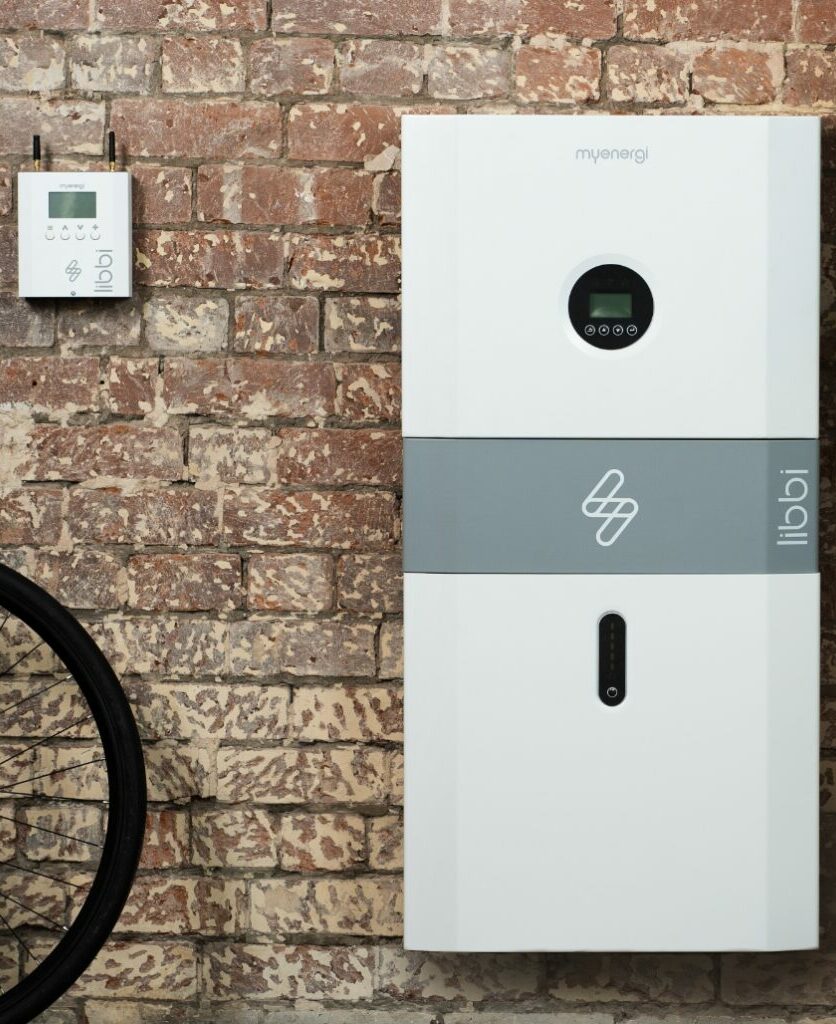
How does a solar energy system work with solar battery storage?
Imagine this, it’s a sunny day and your solar panels are gathering lots of energy for you to use to power your home. In fact, they are working so efficiently that they’re actually generating way more electricity than you need. What happens to all that extra electricity?
Without a solar battery storage system, that extra electricity is sent back to the grid and used to power other homes. Even though it might sound nice to generate renewable energy that helps your neighbours to power their homes, it does mean you’re not getting the full benefit of your solar panels.
By connecting a solar battery storage system, like libbi, to your solar power system, you can hold onto that excess energy production for your own use at night or when it rains. This way, you can be sure that your home continues to be powered by clean, renewable energy all the time.
Find out moreThe technical bit
There are quite a lot of technical elements and confusing steps involved when it comes to taking energy from the sun, converting it into electricity using solar panels and storing it for your personal use. Honestly, it still blows our minds sometimes!
We’ve broken this down into 5 simple(ish) steps to help you understand a little more.
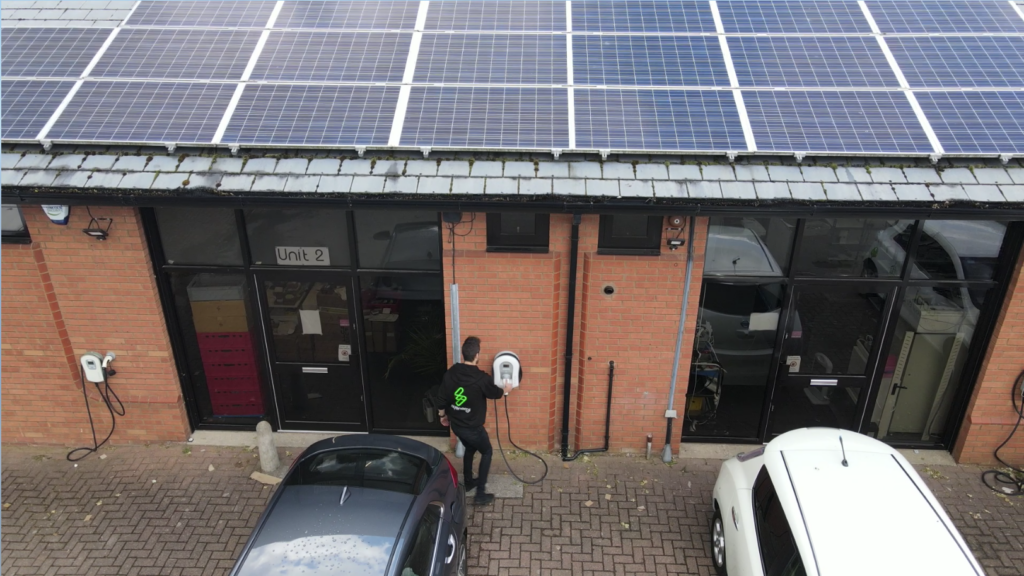
Step 1: Energy Conversion.
You might have heard the term PV panels, this stands for photovoltaic panels. PV panels convert sunlight into direct current (DC) which is a term used to describe electricity which flows in one continuous direction (which is great, we don’t want to try and send energy back to the sun after all).
This conversion happens when particles of light (photons) hit the solar panels and dislodge electrons from the atoms within the panels. This then creates an electrical current.
Step 2: Inverter
Because the DC electricity produced by the solar panels is not suitable for most household appliances, this needs to be converted into alternating current (AC) electricity. To do this, an inverter is used which causes the DC to reverse its direction up to 60 times a second at regular intervals which then creates AC.
Just like that, the energy from the sun is being converted into electricity to boil your kettle and make that perfect cup of tea. It’s at this stage where you can choose to give away your excess electricity to the grid or to use a solar battery storage system to store the electricity to make another cup of tea when the sun isn’t shining as brightly.
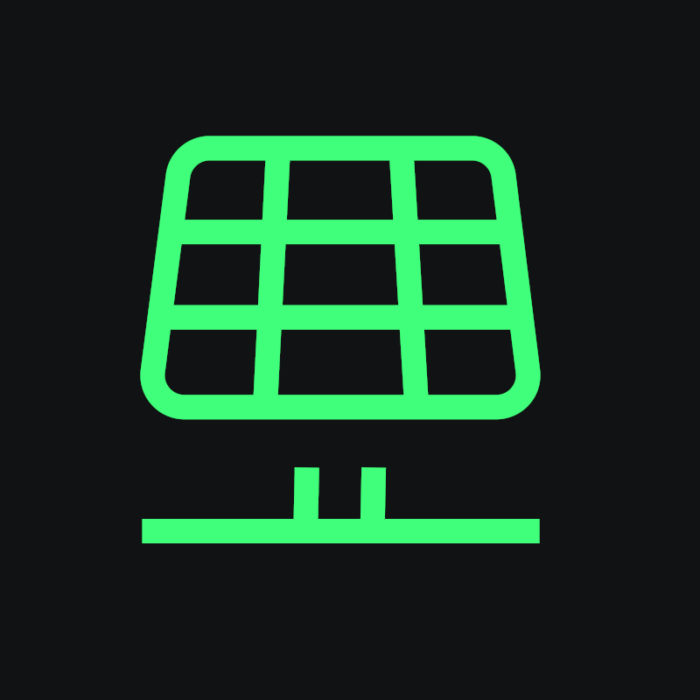
Step 3: Battery Controller
Before the electricity can be stored in a battery, a charge controller is used to ensure that the correct voltage and current are going from the solar panels to the battery. By using a charge controller, the lifespan of your battery can be maximised as it will always be charging at the correct rate.
This regulated electricity can then be used to charge the battery as a way of storing it for your future use. During the charging process, electrical energy is stored in the battery as chemical energy through a series of electrochemical reactions. That might sound confusing, but it’s very similar to the way in which all rechargeable batteries operate, just on a bigger scale.
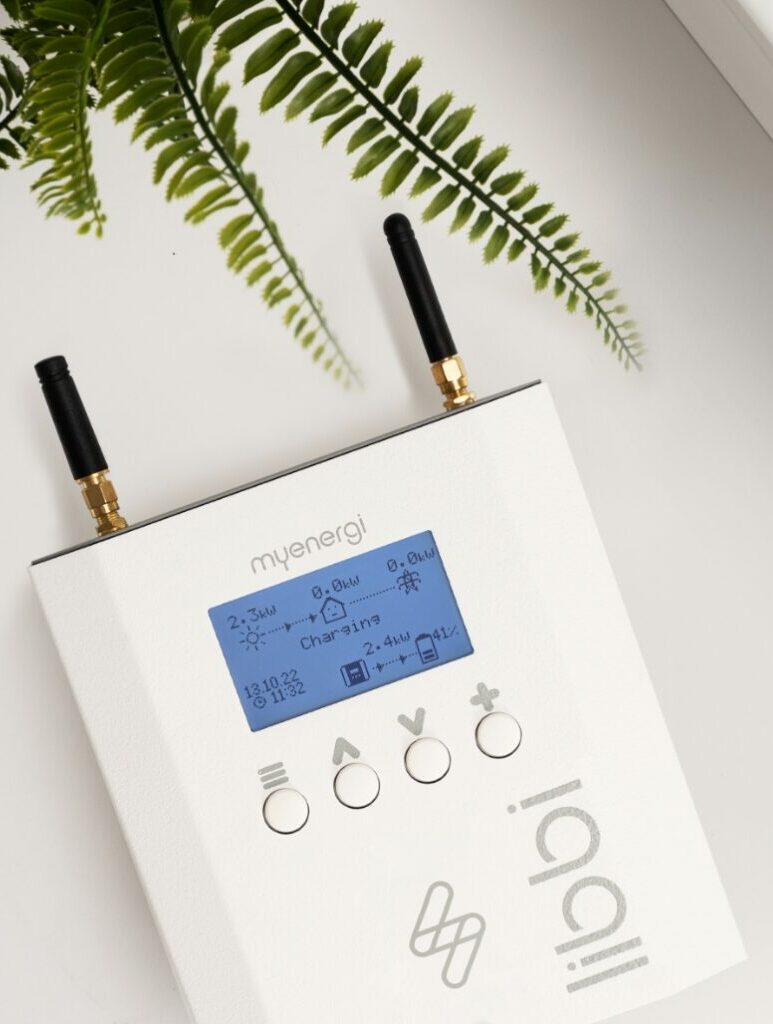
Step 4: Battery Discharge
Sometimes, the electricity generated by your solar panels might not be enough for what you need; typically on very rainy days or overnight. However, if you charge your battery with your excess electricity, then it can discharge the stored chemical energy which can be converted back into electricity. So no matter how miserable it is outside, you can still make a cup of tea (thank goodness).
Step 5: Battery Management System
A battery management system (BMS) is a crucial component of any solar battery storage system. It monitors and controls the charging and discharging of the solar battery to ensure that it is always operating within safe limits.
The BMS also works to protect the battery from any potential issues like overcharging, over-discharging, short-circuiting and overheating. All of which could be dangerous and will certainly impact the lifespan of your battery.
Not only will the BMS keep you and your solar battery safe, it can also provide valuable information on the battery’s state of charge, capacity and overall health which gives you more information to make decisions about your energy usage.
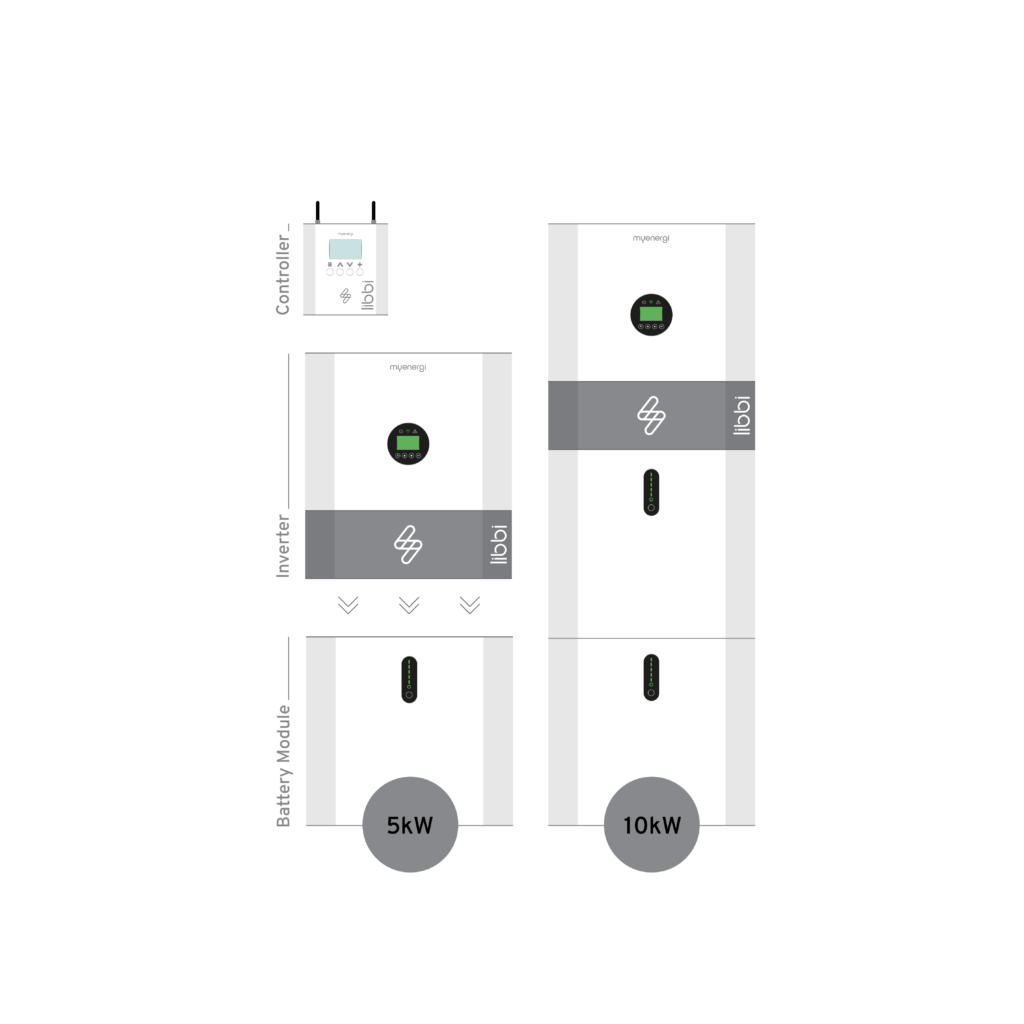
How long will a 5kW battery last?
There are so many different factors that will have an impact on the amount of time your solar battery can power your home. From your household’s daily energy consumption to the amount of solar energy generated by your panels and when you use your solar battery to how effective your BMS is.
As a general rule, an average household can be powered for between 6 and 10 hours from one battery. Although this can vary significantly depending on the factors listed above.
You can work out how long a 5kW solar battery will last you by dividing the capacity of the battery (measured in kilowatt-hours or kWh) by your average energy usage (luckily also measured in kWh). For example, if your 5kW battery has a capacity of 20 kWh and you typically use an average of 2kWh per hour in your home, your battery will last around 10 hours.
If you want more information, you can contact us to discuss how battery storage can help you.
Find out moreRely less on the grid
The libbi solar battery storage system is designed to help you make the most of your solar energy system. With a modular design that allows you to customise your storage capacity, libbi ensures that you can store as much solar power as you need.
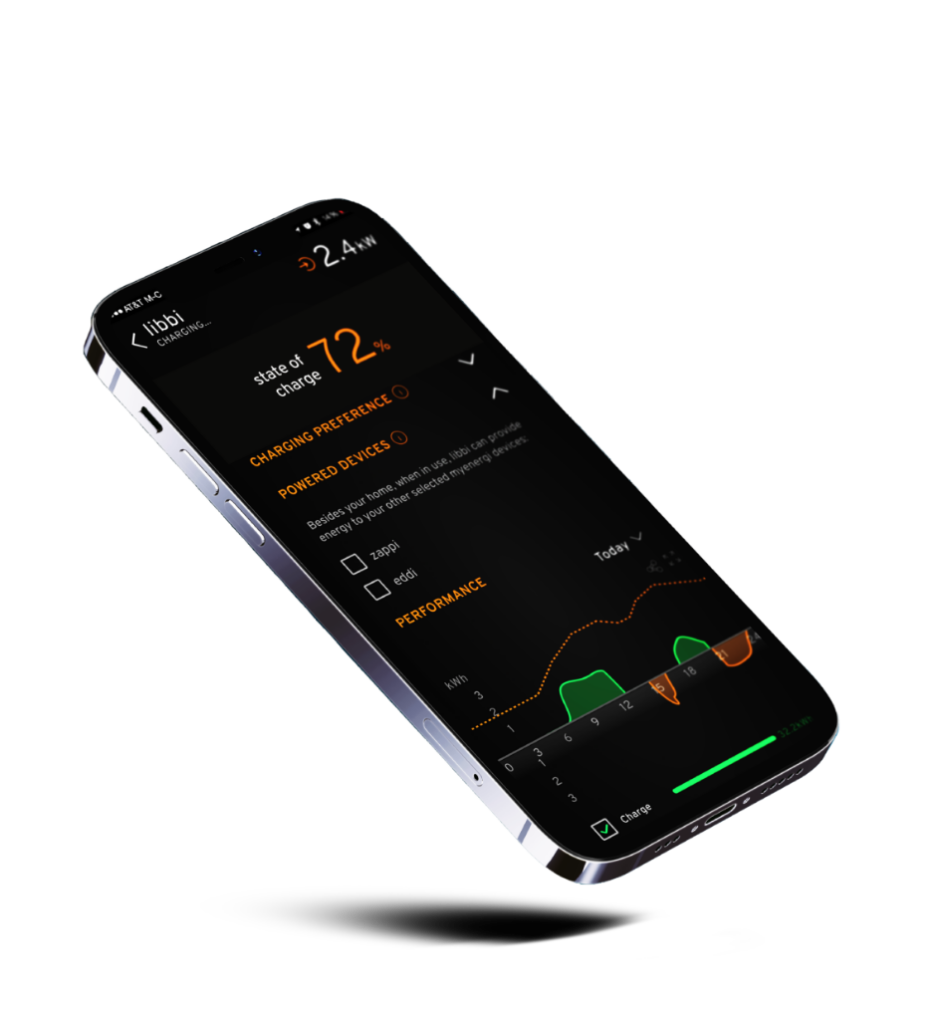
libbi has been designed to integrate seamlessly with other myenergi products such as the zappi electric vehicle charger and the eddi energy diverter. You can maximise the benefits of your solar energy system by storing excess power and then diverting it to charge your electric vehicle, heat your water or other appliances when needed.
With an intelligent battery management system, the libbi always operates at peak efficiency and has a prolonged lifespan. The system provides real-time monitoring which allows you to track your energy usage, battery charge and solar production all from the myenergi app. Giving you all the information you need to make informed decisions about your energy consumption.
As well as its superior performance, the libbi solar battery storage system is designed with sustainability in mind. The libbi utilises lithium iron phosphate batteries which are known for not only their long life cycles, but also high energy density and excellent safety records.
Thanks to its modular design, the libbi system offers you the chance to upgrade your solar battery capacity as your energy needs evolve. Preventing waste and ensuring that you always have the exact right amount of storage for your needs.
Find out more
 libbi
libbi